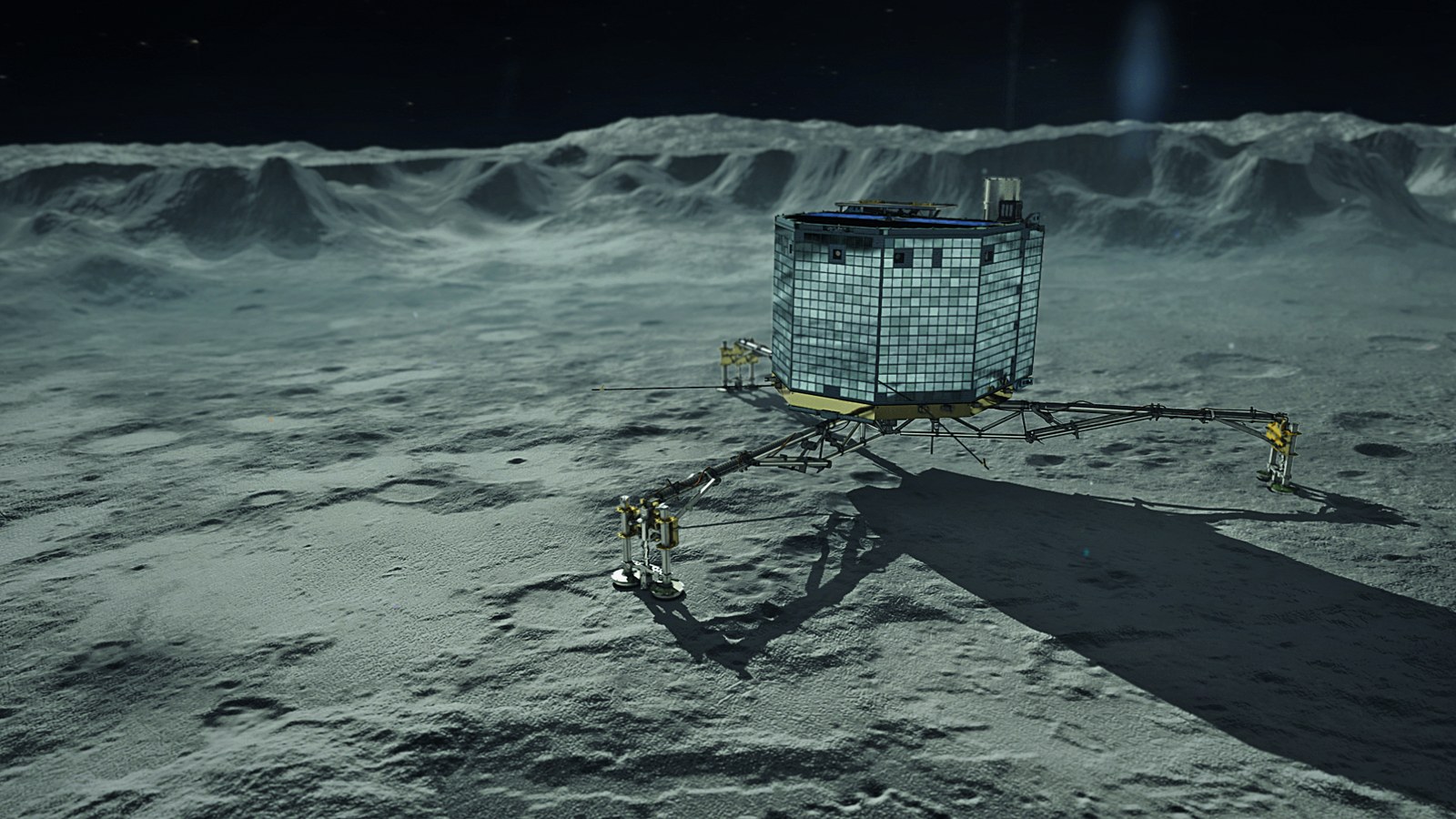Nocturnal contact with Philae

The Philae lander reported back on 14 June 2015. From 23:22 to 23:26 CEST, the lander sent some data packets that are now being evaluated at the German Aerospace Center (Deutsches Zentrum für Luft- und Raumfahrt; DLR). "But this time, the connection to the lander was relatively unstable," says DLR Philae Lander Project Leader Stephan Ulamec. On 13 June 2015, the lander woke up for 85 seconds for the first time after a nearly seven-month hibernation and sent the first regarding its condition. The data acquired during the second contact confirms that Philae, which is on the surface of Comet 67P/Churyumov-Gerasimenko, is in good condition and ready for operations. Now, the trajectories of the Rosetta orbiter will need to be adapted to allow longer contact times with Philae.
There is now sufficient energy and a temperature that is not so low, so Philae is currently receiving at least three hours of sunlight per comet day, which supplies it with energy. Until now, the engineers had been expecting only 1.3 hours of illumination. Before the team at the DLR Lander Control Center can command Philae, which is about 304 million kilometres away from Earth, stable and long duration connections to the lander must be established. Only then, can the prepared procedures for the scientific work with its 10 instruments be uploaded and the next experiments begin.
The order in which the instruments will be activated will be determined once Philae's health has been fully analysed. "First, the non-mechanical instruments will be used – that is, instruments that do not drill or hammer," explains Ulamec. In the forefront will be those instruments that consume little energy and also send only small amounts of data to Earth. With the awakening of Philae, it could be possible to do research on a comet on site while it becomes active on the way to the Sun for the first time.
The mission
Rosetta is an ESA mission with contributions from its Member States and NASA. Rosetta’s Philae lander is contributed by a consortium led by DLR, MPS, CNES and ASI.
